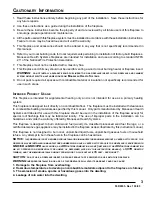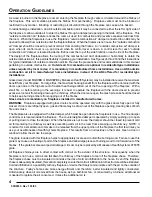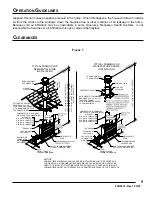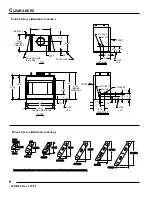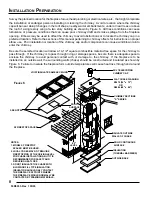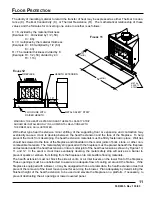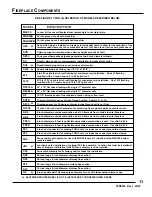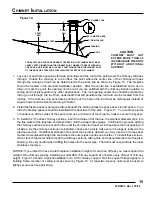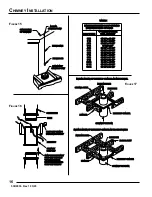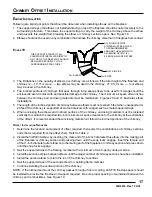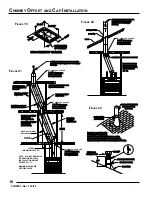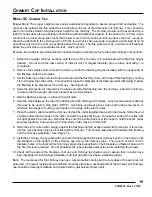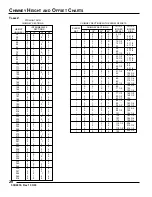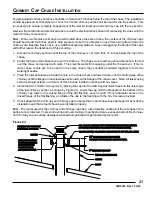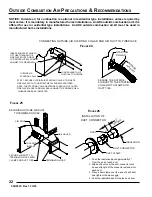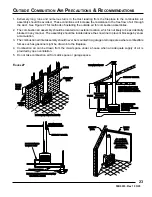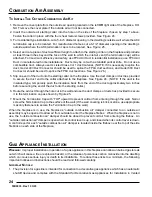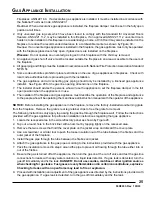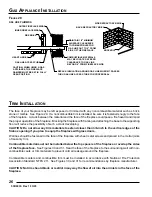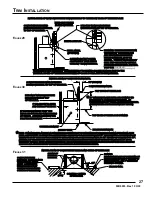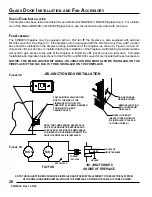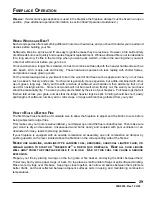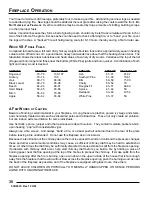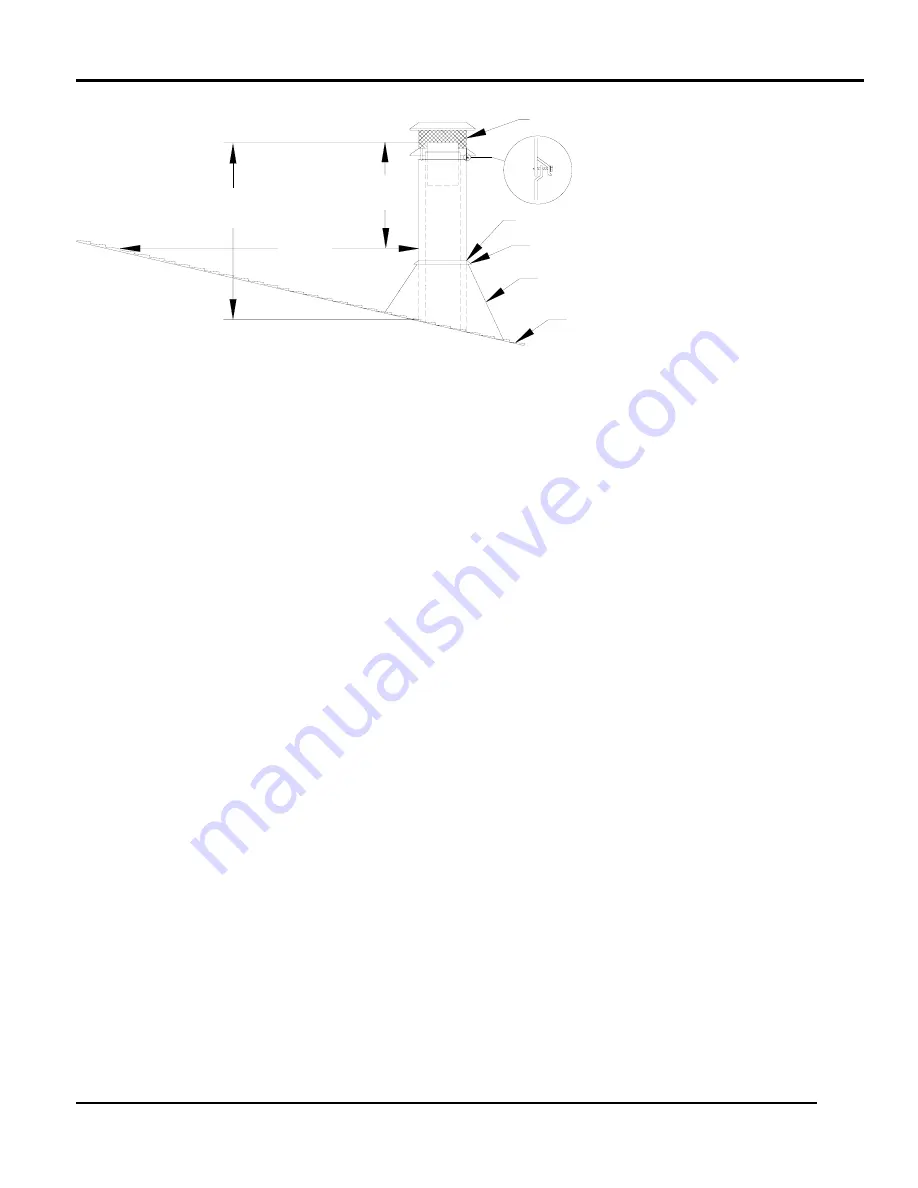
15
C
HIMNEY
I
NSTALLATION
1. Lay out, cut and frame openings through all ceilings and the roof at the point where the chimney will pass
through. Unless the chimney is to be offset, the point where the center line of the chimney will pass
through the ceiling and roof can be determined with a plumb line as shown by Figure 15. The fireplace
should be located in the planned installation position. After the center line is established and a nail is
driven to mark the point, the opening can be cut if you are satisfied with the chimney location relative to
ceiling and roof joists and/or any other obstructions. The roof opening center line should be marked by
driving a nail through the roof from underneath that will penetrate the roof and can be located from the
rooftop. If the chimney is to penetrate a pitched roof, the hole in the roof must be rectangular instead of
square and should be sized according to Table 1.
2. Install the firestop spacer as required from beneath the ceiling unless the space above is attic space. In an
attic, the firestop spacer should be installed at the floor level of the attic. Figure 17. You must have joists
or headers on all four sides of the spacer and use a minimum of four 8-penny nails to secure the spacer.
3. To install the “S” series chimney sections, insert the male end of the flue, the smallest diameter pipe, into
the flue outlet of the fireplace and press down until the snap locks engage. Continue the process, adding
the chimney sections on top of each other until the chimney is at least six inches above the roof opening on
all sides. As the chimney sections are installed, check each joint to make sure it is properly locked to the
previous section. If additional strength of the outer pipe joints is desired, you may use two or three sheet
metal screws placed through the area where the outer pipes overlap one another. To install these screws,
drill a 1/8-inch diameter hole through the chimney sections, taking care not to penetrate the inner flue pipe.
Warning: Be very careful when drilling the holes into the outer pipe. The drill must not penetrate the inner
stainless steel pipe.
NOTICE: If you intend to have a total fireplace installation height of more than 30 feet, you must support the
weight of the chimney pipe by installing a model SCS chimney support at or below every 30 feet of chimney
height. Figure 16 shows a typical installation of a SCS chimney support.
Nail the support straps tightly to a
building frame member or ceiling joist as shown by Figure 16. At least two 8-penny nails must be used to
tightly secure each support strap.
APPLY MASTIC HERE
SC CHIMNEY CAP
STORM COLLAR
FLASHING
2 FEET
10 FEET
3 FEET
MIN.
MIN.
OF THE ROOF OR STRUCTURE THAT IS WITHIN 10 FEET OF THE CHIMNEY.
FOR SAFETY AND FOR PROPER DRAFT OPERATION, THE CHIMNEY MUST BE AT
LEAST 3 FEET HIGHER THAN THE HIGHEST POINT WHERE IT PASSES THROUGH
THE ROOF, AND IT MUST BE AT LEAST 2 FEET HIGHER THAN THE HIGHEST PART
ROOF
F
IGURE
14
CAUTION:
CHIMNEY MUST NOT
EXTEND MORE THAN 90
INCHES ABOVE THE ROOF
WITHOUT ADDITIONAL
SUPPORT.
53D9033. Rev 1 03/03
Содержание DELUXE RADIANT WOOD BURNING FIREPLACE SWB400I
Страница 35: ...35 THIS PAGE INTENTIONALLY LEFT BLANK 53D9033 Rev 1 03 03 ...
Страница 38: ...38 THIS PAGE INTENTIONALLY LEFT BLANK 53D9033 Rev 1 03 03 ...
Страница 39: ...39 THIS PAGE INTENTIONALLY LEFT BLANK 53D9033 Rev 1 03 03 ...
Страница 40: ...53D9033 Rev 1 03 03 ATTENTION APPLIANCE INSTALLER PLEASE RETURN THIS INSTRUCTION MANUAL TO THE CONSUMER ...



